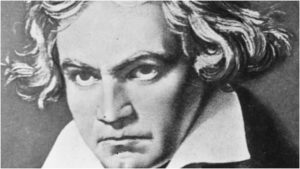
‘Vestas Feuer,’ Beethoven’s ‘Other’ Opera
By David SalazarBeethoven only ever finished one opera – “Fidelio.”
But this wasn’t the only work he attempted to create. In fact, the famed composer did intend to make a name for himself on the stage, but it never came to fruition outside of “Fidelio.” One other attempt was “Vestas Feuer.”
With a libretto by Emanuel Schikaneder,” Beethoven made his attempt at the work in 1803, around the time that Schikaneder gave him the libretto for “Fidelio.” Schikaneder, of course, had already authored “The Magic Flute” and had keen interest in working with the up and coming Beethoven.
The libretto for “Vestas Feuer” is best summarized as follows. Volivia and her lover Sartagones are mixed in a family feud as he is the enemy of her father Porus. A roman official, Romenius, desires Volivia, and banishes Porus and Sartagones from Rome. Volivia seeks refuge in the Temple of Vesta and becomes a vestal virgin. Romenius and his soldiers thus intend to destroy the temple so that the Roman official can claim Volivia as his lover. Ultimately, he dies at the hands of his former lover Sericia, the sacred flame in the temple reignites, and Volivia is rejoined with her lover amidst rejoicing.
The work clearly plays into some of the these that the composer would develop in “Fidelio” with a corrupt ruler enforcing cruel punishment on an enemy and a heroine disguising herself to avoid tyrannical rule. While “Fidelio’s” characters act out of political motivation, this work centered on a love triangle and the abuse of power that stems from it. Like “Fidelio,” the work was to end with joy and celebration.
However, Beethoven ultimately abandoned the project, leaving but a 10-minute musical fragment that is rarely performed. Some of the music that the composer did complete for “Vestas Feuer” actually turned into music for “Fidelio” including the famed duet “O namenlose Freude” between Florestan and Leonore. In “Vestas Feuer,” the music was used for a duet between Volivia and Sartagones as they declare their own love. An aria for the slave Malo was also utilized as a framework for Pizarro’s aria in “Fidelio.”
Schikander did give his libretto over to a different composer but the work has never quite managed much reputation in the opera world. The libretto has garnered poor reception by critics since as well, further fortifying Beethoven’s position on the work.


